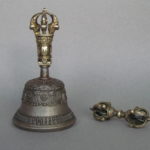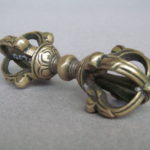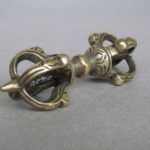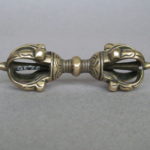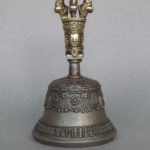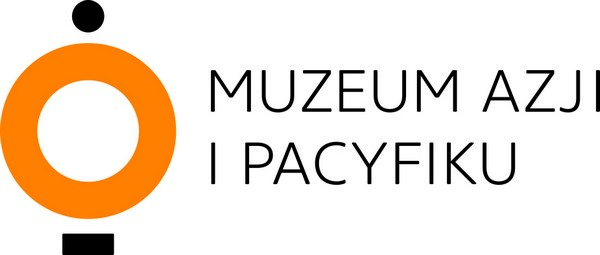Vajra and ritual bell of Vajrayana practitioners
Mongolia, 2nd half of the 19th century
brass
casting, cizelling
inv. numer MAP 9235, 9236
In the month of May, commemorating the Buddhist festival of vesak (29th May) – marking the birthday, enlightenment and death of the Shakyamuni Buddha, we are showing the two most important ritual objects in the tradition of Tibetan Vajrayana (Skr.: Diamond Vehicle), the most recent form of Buddhism, practiced among other in Tibet and Mongolia. These are: a ritual scepter of spiritual power – vajra (held in right hand) and a bell (left). They are used both by monks and nuns and by lay followers of the religion, in rituals and prayers. The vajra symbolizes compassion, the method of effective action in promoting the Dharma (Buddhist religion) and the male aspect of Buddhist enlightenment, and the bell symbolizes wisdom, emptiness (Skt. shunyata) and the female aspect of the enlightenment.
The vajra originates from India, where it originally was the attribute of Indra, the important Hindu god. In Tibet it is an attribute of (among other) Adi-Buddha (the Ultimate Buddha form) Vajradhara. The version of the vajra with five prongs combined symbolizes the five Buddhas known as cosmic or transcendental or Dhyani-Buddhas.
The bell (Skt. ghanta) shown here is topped by a half-vajra, beneath which is a head of Prajnaparamita – a female deity symbolizing wisdom. On the body of the bell there are eight petals of a lotus (a flower symbolizing creation in India) filled with Sanskrit syllables – symbols of eight female Bodhisattvas. On the side wall of the bell we can see eight symbols of the main Bodhisattvas: the lotus, wheel of the Dharma, three jewels, sword etc.
The vajra and bell can be viewed in the Museum hall until 31st May.

![grafika z tekstem [journeys to the east]](https://www.muzeumazji.pl/maip/uploads/2022/08/baner_strona_english_tn-1140x220.jpg)


